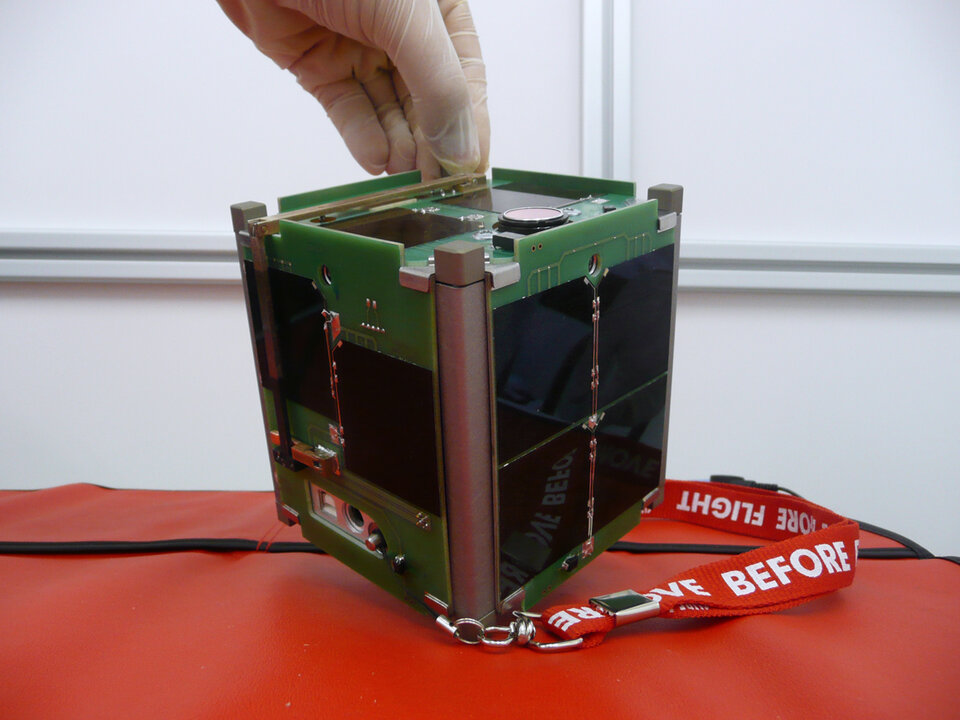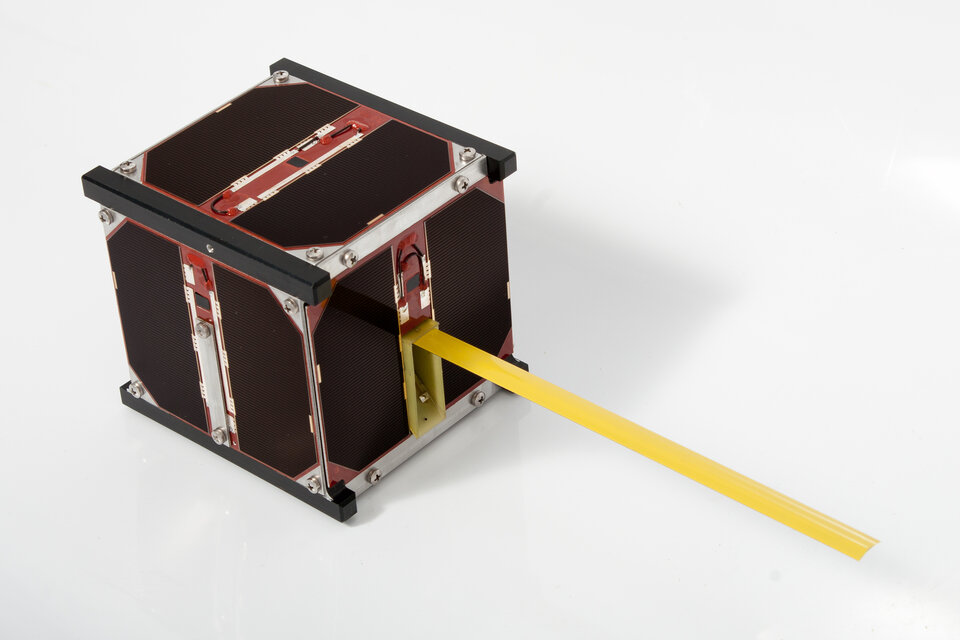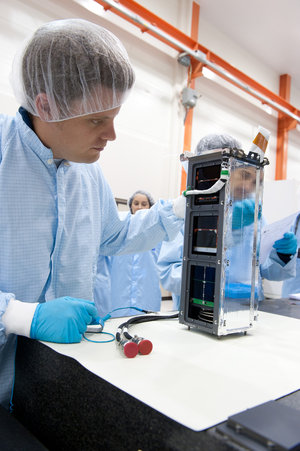Fly Your Satellite! – Vega Maiden Flight Teams
Seven teams of university students were selected to fly their CubeSats on the maiden flight of ESA's Vega launch vehicle.

Politecnico di Torino, Italy
Demonstration of an active 3-axis attitude determination and control system including an inertial measurement unit.
With UniCubeSat-GG, first CubeSat ever launched by Italy.

University of Bucharest, Romania
Imaging of the Earth surface using a digital camera and in situ measurement of radiation dose and micrometeoroid flux.
First satellite ever launched by Romania.

Budapest University of Technology and Economics, Hungary
Demonstration of various spacecraft avionics, including a power conditioning system, transceiver and onboard data handling.
First satellite ever launched by Hungary.

Warsaw University of Technology, Poland
Testing of a deployable atmospheric drag augmentation device for de-orbiting CubeSats.
First satellite ever launched by Poland.

University of Montpellier 2, France
Testing and evaluation of radiation effects (low dose rate) on bipolar transistor electronic components.
First CubeSat ever launched by France.

University of Rome La Sapienza, Italy
Study of the effects of orbital eccentricity on attitude motion enhanced by gravity gradient using a deployable boom equipped with solar cells.
With e-st@r, first CubeSat ever launched by Italy.

University of Vigo and INTA, Spain
Demonstration of software-defined radio and solar panel deployment.
First Spanish CubeSat.
The ESA Cubs, the first CubeSats to be sent into space by a European launcher, will be ejected from their different deployment systems mounted on the support structure of the main payload, LARES, into an orbit of 300 x 1450 km at an inclination of 69.5 degrees. They will have a natural orbital lifetime of up to 4 years, depending on their rate of orbital decay due to atmospheric drag.















 Germany
Germany
 Austria
Austria
 Belgium
Belgium
 Denmark
Denmark
 Spain
Spain
 Estonia
Estonia
 Finland
Finland
 France
France
 Greece
Greece
 Hungary
Hungary
 Ireland
Ireland
 Italy
Italy
 Luxembourg
Luxembourg
 Norway
Norway
 The Netherlands
The Netherlands
 Poland
Poland
 Portugal
Portugal
 Czechia
Czechia
 Romania
Romania
 United Kingdom
United Kingdom
 Slovenia
Slovenia
 Sweden
Sweden
 Switzerland
Switzerland




























